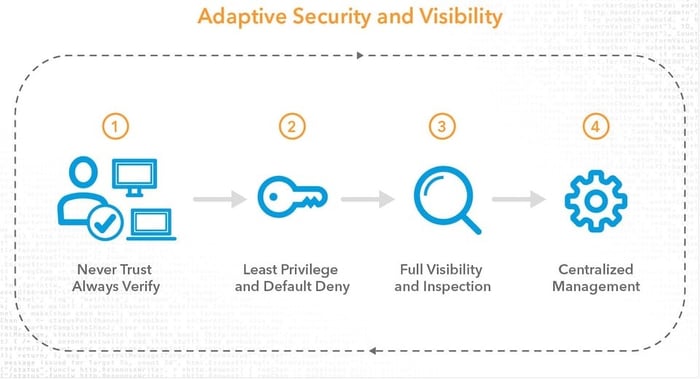 Tim O'Neill
Microsoft Modern Workplace Lead
Tim O'Neill
Microsoft Modern Workplace Lead
While quite a pessimistic term, in the security world Zero Trust encourages the organisation to look at their systems more holistically and take a tough stance on data coming in regardless if it’s internal or external. The core tenant of Zero Trust is, as the name suggests ‘trust no one’ and has been developed to combat the more sophisticated cyber threats.
Zero Trust represents the next step from traditional castle-moat approach whereby businesses focus on securing perimeters. This method isn’t simply focused on keeping the bad stuff out, it also investigates what is roaming freely within our network as well.

“The strategy around Zero Trust boils down to don’t trust anyone. We’re talking about, ‘Let’s cut off all access until the network knows who you are. Don’t allow access to IP addresses, machines, etc. until you know who that user is and whether they’re authorized,’” explains Charlie Gero, CTO of Enterprise and Advanced Projects Group at Akamai Technologies in Cambridge, Mass.
‘How do I transition to this new way and what do I need to do?’ I hear you ask; if you are asking the question, then you’re on your way, as defining what a Zero Trust approach looks like for your business is the first step.
5 key processes every business looking to implement Zero Trust should be following:
Dicker Data partners with industry leading security vendors to ensure the Australian IT reseller community have access to a full suite of technology designed to fight cybercrime, protect data, reduce risk and organisation down time.
Our dedicated team work closely with our Australian IT reseller partners to understand the business requirements of their customers and deliver tailored, leading-edge security solutions. Dicker Data IT partners can leverage the experience from our local team of sales, technical and product management specialists, as well as leverage promotions and incentives.
To learn more visit our Security Hub. Here you'll also have a chance to get in contact with the team if you have any inquiries.

17 December, 2025 - 9 min read
As 2025 draws to a close, we’ve taken a moment to reflect on the... Read more

12 December, 2025 - 5 min read
We were thrilled to host the third edition of the Dicker Data... Read more

10 December, 2025 - 2 min read
In today’s fast-paced, AI-driven world, your customer's... Read more
Subscribe to the Dicker Data blog
for regular updates and insights

Dicker Data (ASX: DDR) is an Australian owned and operated, ASX listed hardware distributor with over 46 years experience. Our dedicated sales and presales teams are comprised of experienced product specialists who are focused on using their in-depth knowledge to help customers tailor solutions to suit their client’s needs.
Phone: 1800 688 586
Email: sales@dickerdata.com.au